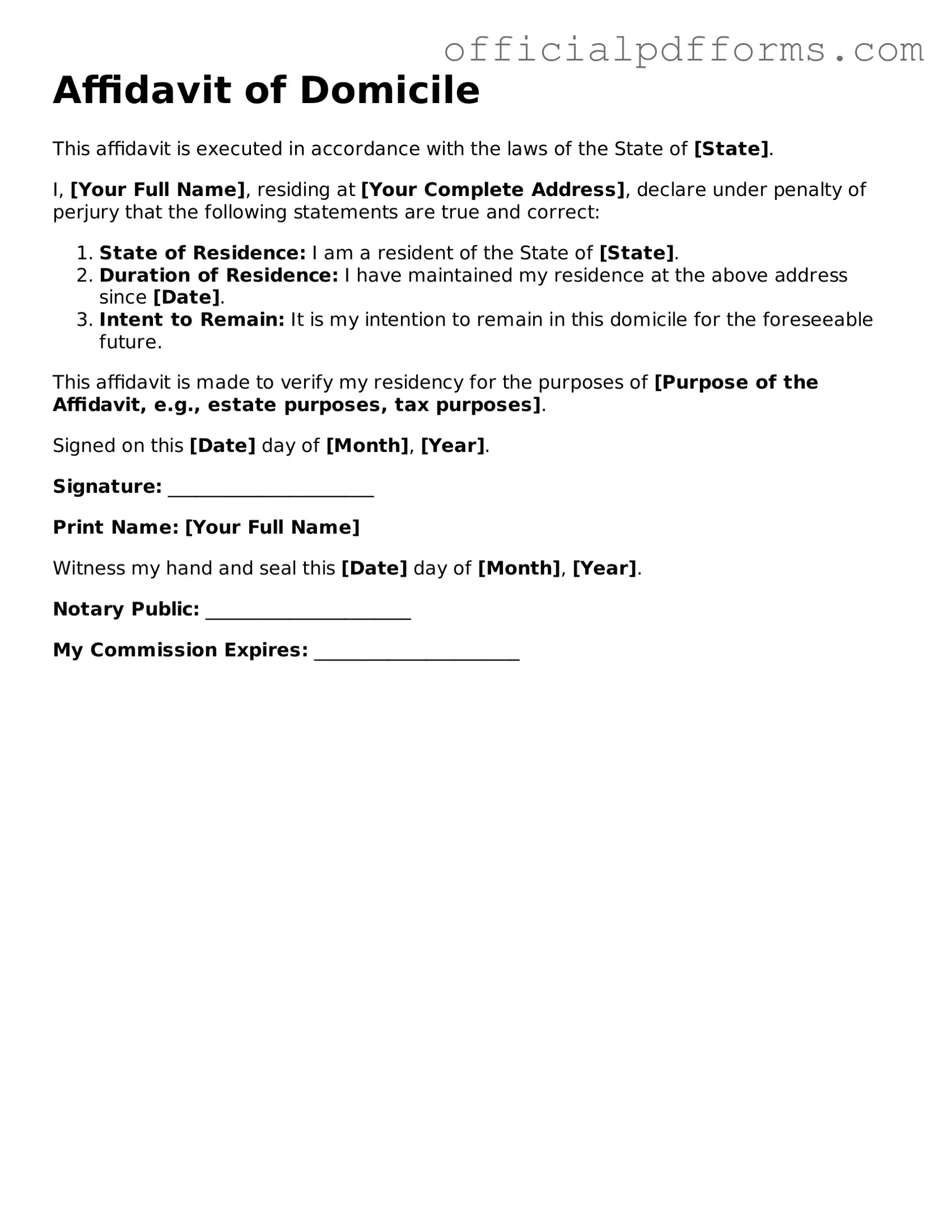What is an Affidavit of Domicile?
An Affidavit of Domicile is a legal document that verifies an individual’s primary residence. It is often used in situations involving the transfer of assets, such as when someone passes away. This document helps establish where the deceased person lived at the time of their death, which can impact tax obligations and the distribution of their estate.
Who needs to complete an Affidavit of Domicile?
Typically, the executor or administrator of an estate will complete the Affidavit of Domicile. However, it may also be necessary for individuals involved in estate planning or those transferring assets to confirm their residency status. Anyone who needs to prove their primary residence for legal or financial reasons may find this document useful.
The Affidavit of Domicile generally requires the following information:
-
The full name of the individual whose domicile is being affirmed.
-
The address of the domicile, including street address, city, state, and ZIP code.
-
The date of death of the individual, if applicable.
-
A statement affirming that the individual resided at the specified address at the time of their death.
-
The signature of the affiant, along with the date of signing.
How do I sign an Affidavit of Domicile?
The Affidavit of Domicile must be signed in front of a notary public. This step is crucial as it adds a layer of authenticity to the document. After signing, the notary will affix their seal and signature, confirming that the affiant is who they claim to be and that they signed the document voluntarily.
Where do I file the Affidavit of Domicile?
The Affidavit of Domicile is typically filed with the probate court or presented to financial institutions holding the deceased person's assets. Depending on state laws and specific circumstances, it may also be filed with local government offices. Always check the requirements in your jurisdiction to ensure proper filing.
Is there a fee associated with filing the Affidavit of Domicile?
Fees can vary based on the jurisdiction and the specific office where the affidavit is filed. Some courts may charge a nominal fee for processing, while others may not require any payment. It’s advisable to contact the relevant office beforehand to understand any potential costs involved.
Can an Affidavit of Domicile be revoked or amended?
Once an Affidavit of Domicile is signed and filed, it generally cannot be revoked or amended. If there is a need to change any information, a new affidavit must be prepared and executed. It’s important to ensure that all details are accurate before signing to avoid complications later on.
